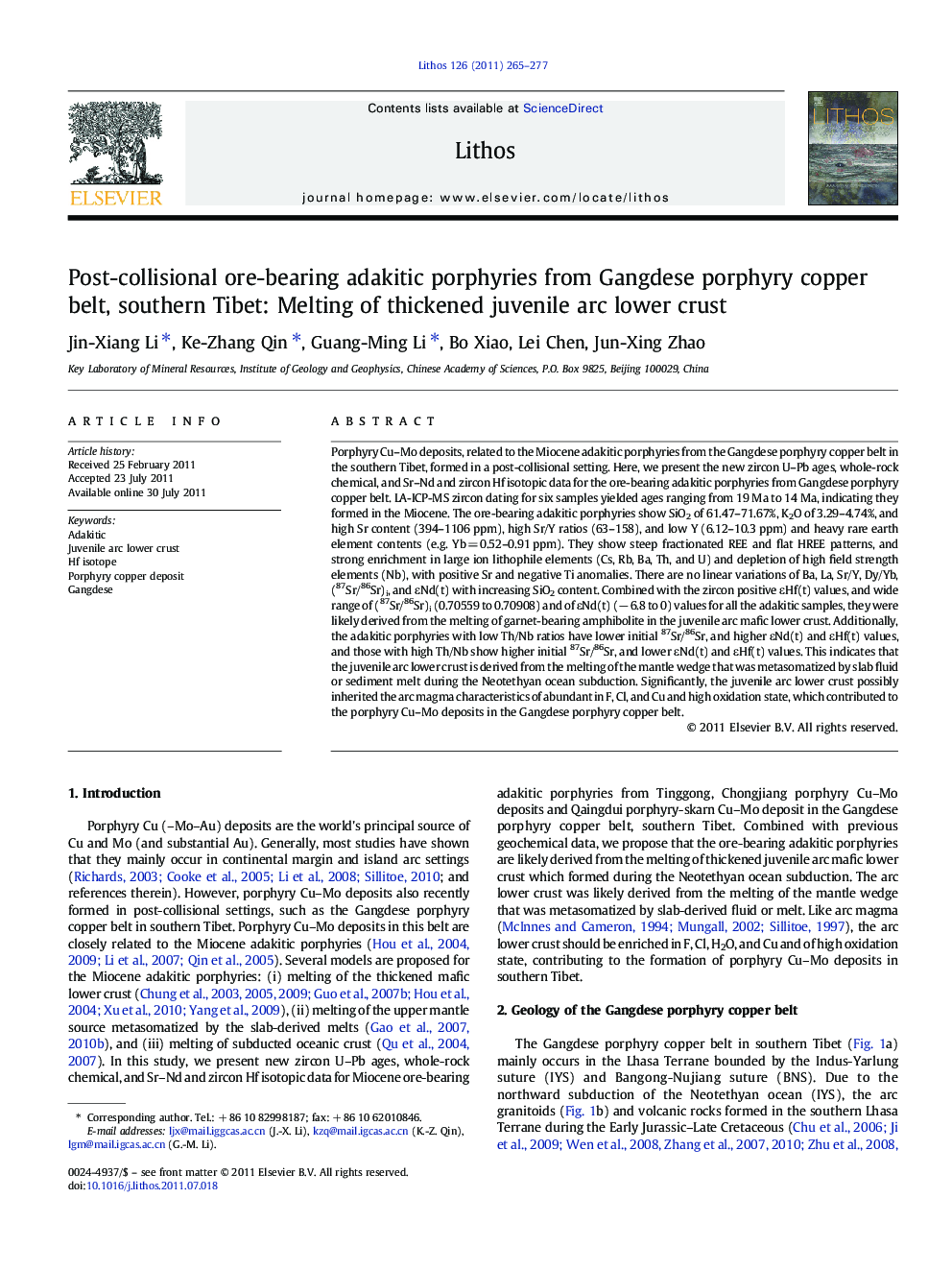| کد مقاله | کد نشریه | سال انتشار | مقاله انگلیسی | نسخه تمام متن |
|---|---|---|---|---|
| 4716716 | 1638716 | 2011 | 13 صفحه PDF | دانلود رایگان |

Porphyry Cu–Mo deposits, related to the Miocene adakitic porphyries from the Gangdese porphyry copper belt in the southern Tibet, formed in a post-collisional setting. Here, we present the new zircon U–Pb ages, whole-rock chemical, and Sr–Nd and zircon Hf isotopic data for the ore-bearing adakitic porphyries from Gangdese porphyry copper belt. LA-ICP-MS zircon dating for six samples yielded ages ranging from 19 Ma to 14 Ma, indicating they formed in the Miocene. The ore-bearing adakitic porphyries show SiO2 of 61.47–71.67%, K2O of 3.29–4.74%, and high Sr content (394–1106 ppm), high Sr/Y ratios (63–158), and low Y (6.12–10.3 ppm) and heavy rare earth element contents (e.g. Yb = 0.52–0.91 ppm). They show steep fractionated REE and flat HREE patterns, and strong enrichment in large ion lithophile elements (Cs, Rb, Ba, Th, and U) and depletion of high field strength elements (Nb), with positive Sr and negative Ti anomalies. There are no linear variations of Ba, La, Sr/Y, Dy/Yb, (87Sr/86Sr)i, and εNd(t) with increasing SiO2 content. Combined with the zircon positive εHf(t) values, and wide range of (87Sr/86Sr)i (0.70559 to 0.70908) and of εNd(t) (− 6.8 to 0) values for all the adakitic samples, they were likely derived from the melting of garnet-bearing amphibolite in the juvenile arc mafic lower crust. Additionally, the adakitic porphyries with low Th/Nb ratios have lower initial 87Sr/86Sr, and higher εNd(t) and εHf(t) values, and those with high Th/Nb show higher initial 87Sr/86Sr, and lower εNd(t) and εHf(t) values. This indicates that the juvenile arc lower crust is derived from the melting of the mantle wedge that was metasomatized by slab fluid or sediment melt during the Neotethyan ocean subduction. Significantly, the juvenile arc lower crust possibly inherited the arc magma characteristics of abundant in F, Cl, and Cu and high oxidation state, which contributed to the porphyry Cu–Mo deposits in the Gangdese porphyry copper belt.
► Porphyry Cu–Mo deposits formed in a post-collisional setting, southern Tibet.
► Zircon U–Pb ages and Sr–Nd–Hf isotopic data for ore-bearing adakitic porphyries are presented.
► Adakites were likely derived from melting of garnet-bearing amphibolite of the juvenile arc crust.
► Arc lower crust is derived from melting of slab-fluids or sediment-melts metasomatized mantle wedge.
Journal: Lithos - Volume 126, Issues 3–4, October 2011, Pages 265–277